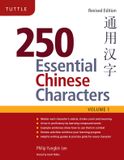Remembering the Kanji 1, 2, 3
Giá:
216,000₫
Giá bán
309,000₫
- Thương hiệu: English books Max30
- Dòng sản phẩm: Japanese
- Miễn phí vận chuyển toàn quốc cho đơn hàng từ 500.000 VNĐ
Remembering the Kanji 1: A Complete Course on How Not to Forget the Meaning and Writing of Japanese Characters
Updated to include the 196 new kanji approved by the Japanese government in 2010 as “general-use” kanji, the sixth edition of this popular text aims to provide students with a simple method for correlating the writing and the meaning of Japanese characters in such a way as to make them both easy to remember. It is intended not only for the beginner, but also for the more advanced student looking for some relief from the constant frustration of forgetting how to write the kanji, or for a way to systematize what he or she already knows.
The author begins with writing the kanji because―contrary to first impressions―it is in fact simpler than learning how to the pronounce them. By ordering the kanji according to their component parts or “primitive elements,” and then assigning each of these parts a distinct meaning with its own distinct image, the student is led to harness the powers of “imaginative memory” to learn the various combinations that make up the kanji. In addition, each kanji is given its own key word to represent the meaning, or one of the principal meanings, of that character. These key words provide the setting for a particular kanji’s “story,” whose protagonists are the primitive elements.
Remembering the Kanji 2: A Systematic Guide to Reading Japanese Characters
Following the first volume of Remembering the Kanji, the present work provides students with helpful tools for learning the pronunciation of the kanji. Behind the notorious inconsistencies in the way the Japanese language has come to pronounce the characters it received from China lie several coherent patterns. Identifying these patterns and arranging them in logical order can reduce dramatically the amount of time spent in the brute memorization of sounds unrelated to written forms.
Many of the “primitive elements,” or building blocks, used in the drawing of the characters also serve to indicate the “Chinese reading” that particular kanji use, chiefly in compound terms. By learning one of the kanji that uses such a “signal primitive,” one can learn the entire group at the same time. In this way, Remembering the Kanji 2 lays out the varieties of phonetic pattern and offers helpful hints for learning readings, that might otherwise appear completely random, in an efficient and rational way. Individual frames cross-reference the kanji to alternate readings and to the frame in volume 1 in which the meaning and writing of the kanji was first introduced.
A parallel system of pronouncing the kanji, their “Japanese readings,” uses native Japanese words assigned to particular Chinese characters. Although these are more easily learned because of the association of the meaning to a single word, the author creates a kind of phonetic alphabet of single syllable words, each connected to a simple Japanese word, and shows how they can be combined to help memorize particularly troublesome vocabulary.
Remembering the Kanji 3: Writing and Reading the Japanese Characters for Upper-Level Proficiency
Students who have learned to read and write the kanji taught in Japanese schools run into the same difficulty that Japan university students themselves face: the number of characters included in the approved list is not sufficient for advanced reading and writing. Although each academic specialization requires supplementary kanji of its own, there is considerable overlap. With that in mind, this book employs the same methods as Volumes 1 and 2 of Remembering the Kanji to introduce additional characters useful for upper-level proficiency, bringing the total of all three volumes to 3,000 kanji.
The 3rd edition has been updated to reflect the 196 new kanji approved by the government in 2010, all of which have been relocated in Volume 1. The selection of 800 new kanji is based on frequency lists and cross-checked against a number of standard Japanese kanji dictionaries.
Separate parts of the book are devoted to learning the writing and reading of these characters. The writing requires only a handful of new “primitive elements.” A few are introduced as compound primitives (“measure words”) or as alternative forms for standard kanji. The majority of the kanji are organized according to the elements introduced in Volume 1.
As in Volume 2, Chinese readings are arranged into groups for easy reference, enabling the student to take advantage of the readings assigned to “signal primitives” already learned.
Seven indexes include hand-drawn samples of the new characters introduced and cumulative lists of the key word and primitive meaning, and of the Chinese and Japanese pronunciations, that appear in all 3 volumes of the series.
Remembering the Kanji has helped tens of thousands of students advance towards literacy at their own pace, and to acquire a facility that traditional methods have long since given up on as all but impossible for those not raised with the kanji from childhood.

























